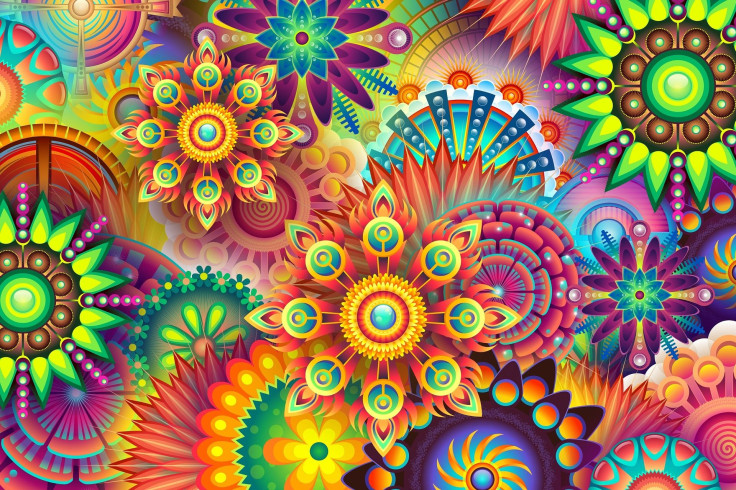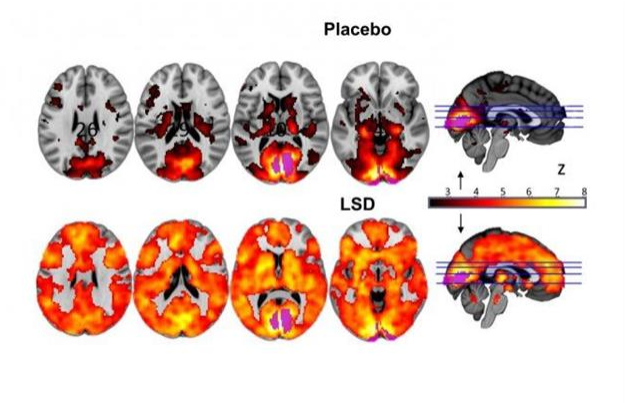Scientists Observe LSD Effects On The Brain; Why Users Experience Hallucinations, Changes In Consciousness

Of all the world’s drugs, LSD is among the most controversial. Though currently listed as a schedule I substance in the United States, researchers and advocates alike have said LSD, also known by the slang term acid, could have therapeutic benefits. Pointing to anecdotes of terrifying flashbacks as evidence of the drug’s dangers, critics have long fought to prevent researchers from discovering these benefits. A groundbreaking study could open many doors for LSD research, though; scientists have finally discovered the biological effects of acid on the brain.
Though users report vivid hallucinations and serious changes in consciousness, how LSD actually changes the brain has remained a mystery for scientists. LSD has been difficult to study not only because of its complex effects, but because of the restrictions it faces as a schedule I substance. Now, a team from Imperial College London and the Beckley Foundation has produced a visual of the substance’s effects on the brain using various techniques, including fMRI and magnetoencephalography (MEG). The results shed light on how hallucinations are formed, how music affects people using LSD, and even why users often report a reconnection with nature.
A major finding of the study details the way in which people process visual information while tripping. Normally, the visual information that our eyes pick up is processed in a brain region called the visual cortex. Researchers observed, however, that the brains of those on LSD incorporated many additional regions in visual processing.
“We observed brain changes under LSD that suggested our volunteers were ‘seeing with their eyes shut’ — albeit they were seeing things from their imagination rather than from the outside world,” said study leader Dr. Robin Carhart-Harris from the Department of Medicine at Imperial. “We saw that many more areas of the brain than normal were contributing to visual processing under LSD — even though the volunteers’ eyes were closed. Furthermore, the size of this effect correlated with volunteers’ ratings of complex, dreamlike visions.”

Another important facet of the study detailed what happens in the brain when people using LSD experience a change in their quality of consciousness. “Normally our brain consists of independent networks that perform separate specialized functions, such as vision, movement and hearing — as well as more complex things like attention,” Carhart-Harris explained. “However, under LSD, the separateness of these networks breaks down and instead you see a more integrated or unified brain.”
Carhart-Harris said this effect may underlie the connectedness to others and nature people often report while using LSD, along with “ego-dissolution,” which means the sense of self has been broken down. He explained that brains naturally become more compartmentalized as we develop into adulthood, and that the brain’s state on LSD resembles that of infant brains: free and unconstrained.
Research from the same team revealed brain changes while people listened to music on LSD, too. The findings showed the combination of LSD and music altered visual cortex activity, with the region receiving more information from a brain structure called the parahippocampus. Normally involved in mental imagery and memory, higher levels of communication between the parahippocampus and the visual cortex caused people to report experiences of complex visions.
The researchers hope these discoveries will help move forward possible treatments for psychiatric disorders that involve LSD — music listening and LSD together could be a powerful therapeutic combination.
“Scientists have waited 50 years for this moment — the revealing of how LSD alters our brain biology,” said Professor David Nutt, the senior researchers on the study. “For the first time we can really see what’s happening in the brain during the psychedelic state, and can better understand why LSD had such a profound impact on self-awareness in users and on music and art. This could have great implications for psychiatry, and helping patients overcome conditions such as depression.”
Sources: Carhart-Harris R, Muthukumaraswamy S, Roseman L, Kaelen M, Droog W, Murphy K, et al. Neural correlates of the LSD experience revealed by multimodal neuroimaging. Proceedings of the National Academy of Sciences. 2016.
Kaelen M, et al. LSD modulates music-induced imagery via changes in parahippocampal connectivity. European Neuropsychopharmacology. 2016.



























